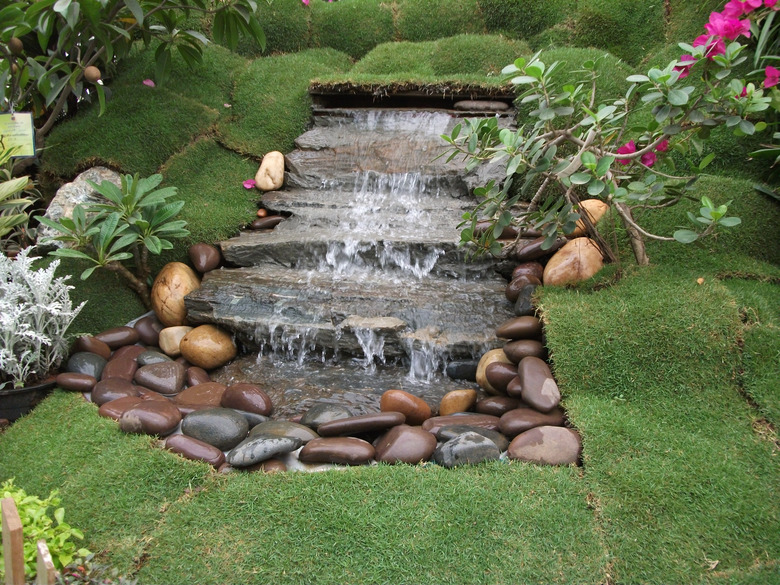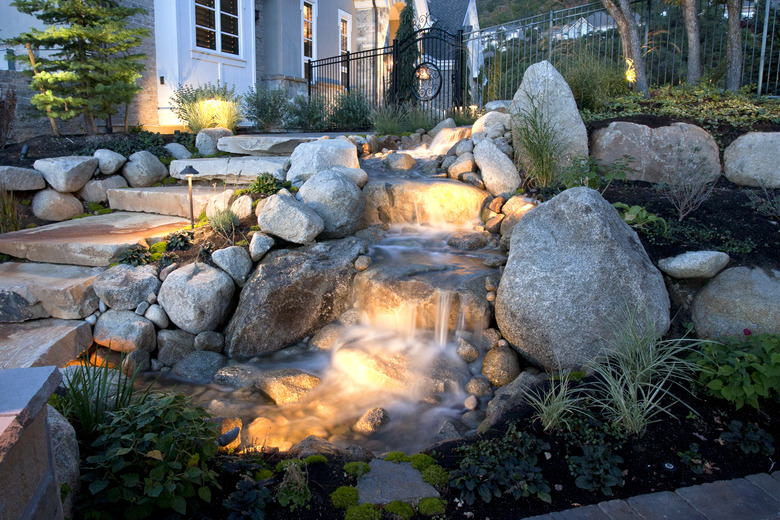How To Install A Pondless Waterfall (Without Buying An Expensive Kit)
We may receive a commission on purchases made from links.
A pondless waterfall is just what the name suggests: a waterfall without a pond. Both backyard waterfalls with ponds and those without need a water reservoir and a recirculating pump to keep the waterfall flowing, but the reservoir for a pondless system isn't visible because it's buried in the ground or in rocks at the base of the waterfall.
You can make your own pondless waterfall without purchasing an expensive kit, but you do need to purchase some supplies and equipment unless you already have them kicking around the house. The essential supplies you need are a recirculating pump, a reservoir and filter, a rubber liner and tubing. Depending on how you arrange the rocks for the waterfall, you'll probably also need adhesive to hold them together.
What You'll Need for This Project
What You'll Need for This Project
Here's what you can expect you'll need to purchase for this project:
- A pump. The first essential piece of equipment you need is a submersible recirculating pump, but it doesn't have to be top-of-the-line. You can find a suitable one for around $40, and you may even be able to recycle one from another part of your garden. It needs to have its own filter, and the reservoir in which it sits needs a removable cover so you can change the filter.
- A reservoir. An inexpensive storm drain will do. Choose one with a grated cover to allow water to flow into it.
- A pond liner and spillway. A pond liner shouldn't set you back more than $50 or $60, assuming your waterfall isn't huge. It's also nice to have a spillway at the top of the waterfall to spread water out and create a nice, wide water cascade.
- Rocks and gravel. In addition to rocks and gravel, you'll need something to hold the rocks together and fill in gaps, such as landscape foam.
How to Build Your Own Pondless Waterfall
How to Build Your Own Pondless Waterfall
After you've gathered all of your supplies for the pondless waterfall project, you'll start to design and build. Here's how to
1. Design Your Pondless Waterfall
Start your project by creating a design. The waterfall must maintain a downward slope from top to bottom to keep the water moving, and that usually requires building an infrastructure with wood, concrete or dirt. The slope can be gentle or extreme, depending on how much splashing you want to hear, and it can meander through the garden or drop in a straight line.
2. Dig the Hole and Build the Waterfall Structure
After building the infrastructure, dig a hole at the bottom for the reservoir, line the hole with a rubber liner and extend the liner all the way to the top of the waterfall. Set the reservoir in the hole and backfill, then install the spillway at the top and backfill that.
3. Place the Rocks and Gravel
Set rocks and gravel on the liner for the length of the waterfall, using foam to hold the rocks in place and seal gaps and gravel to hide the foam.
4. Place the Pump
Finally, set the pump in the reservoir, connect tubing and run the tubing to the spillway, camouflage that with rocks and gravel and plug in the pump.
How to Maintain a Pondless Waterfall
How to Maintain a Pondless Waterfall
Once everything is in place, fill the reservoir with water and turn on the pump. Watch the water flow and make sure it all passes through the grate back into the reservoir. If any is lost along the spillway or at the bottom of the waterfall, the reservoir will eventually run dry. Even if all of it drains properly, you're still probably going to have to top up the reservoir periodically with a garden hose during dry weather.
If you run your waterfall continuously, the pump filter will eventually clog and reduce water flow. To prevent this, remove the reservoir cover and clean or replace the filter on the pump periodically. Except for these few procedures, your pondless waterfall shouldn't require much more maintenance.

